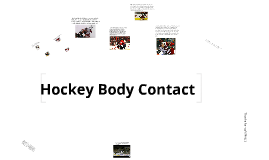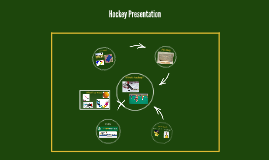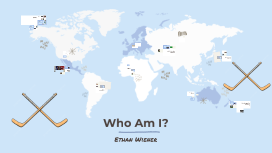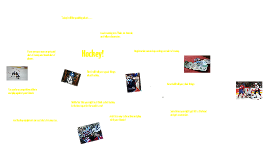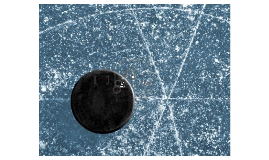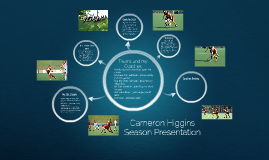Hockey Presentation
Transcript: Values - Family - Loyalty - Self-Respect - Justice - Friends Skills Skills - - Leadership - Hard-working - Problem Soliving - Discipline - Mathematics Likes - Hockey - Exercise - Guitar - 80s - Camp Ethan Playing Guitar at Camp Timberlane Rising Stars Current rising stars such as Connor McDavid and Auston Matthews are redefining the sport with their speed and skills. Their performances are setting new expectations and attracting younger audiences to hockey through captivating gameplay. Legendary Players Player Contributions to the Game Legendary players like Wayne Gretzky and Mario Lemieux revolutionized hockey with their incredible skills, setting records that still stand today. Their contributions have made them icons not only in the NHL but also worldwide, influencing how the game is perceived and played. Players contribute beyond on-ice performance through philanthropic efforts and community involvement. Initiatives like The Hockey Fights Cancer campaign demonstrate how athletes leverage their platforms to support social causes and inspire broad societal change. Key Players and Their Impact Key players not only shape the game through their outstanding performance but also inspire future generations and elevate the sport's profile globally. The Role of a Coach Coaching Philosophy A coach shapes not only athletic performance but also the overall experience and development of players in hockey. The coaching philosophy sets the foundation for a team's culture and values, encompassing principles such as teamwork, discipline, and resilience. Effective coaches prioritize player development and create an environment where athletes can thrive both on and off the ice. International Competitions NHL Overview Training Regimens Team Management A comprehensive training regimen includes skill development, physical conditioning, and mental preparation. Coaches design tailored programs to address the specific needs of players, using drills and exercises to enhance performance and address weaknesses in both individual and team play. Effective team management involves cultivating a cohesive unit through clear communication, conflict resolution, and strategic decision-making. Coaches play a critical role in fostering relationships, maintaining motivation, and ensuring that every player understands their role within the team structure. The National Hockey League (NHL) is a premier ice hockey league comprising 32 teams, primarily based in the United States and Canada. Established in 1917, it hosts prestigious events including the Stanley Cup playoffs, drawing millions of viewers and featuring top-tier talent. Global hockey competitions, such as the IIHF World Championships and the Olympic Games, showcase elite talent from various countries. These events foster international rivalry and are critical in growing the sport's popularity worldwide. Women's Hockey Leagues Technological Advancements Dislikes Women's hockey has gained traction with leagues like the Premier Hockey Federation (PHF) and the Canadian Women's Hockey League (CWHL). These leagues provide competitive platforms for female athletes and promote greater visibility of women's sports. Major Hockey Leagues - Incompetence - Liberals - Arrogance - Losing - Bugs Innovative technologies like player tracking systems and instant replay are reshaping how the game is played and refereed. These advancements not only enhance viewer experience but also improve player performance analysis, leading to better training techniques and more strategic gameplay. Rules of the Game Youth Participation and Development Hockey's competitive landscape is dominated by several prominent leagues, showcasing talent at both national and international levels. Understanding hockey's rules is essential for appreciating the strategy and skill involved in this dynamic sport. Increased initiatives for youth hockey programs are vital for sustaining the sport’s future. Organizations focus on inclusivity and skill development, ensuring young athletes not only learn the game but are also inspired to pursue hockey at higher levels, fostering a new generation of players. Scoring System Penalties and Fouls Evolution of the Game A goal is awarded when the entire puck crosses the goal line, emphasizing the significance of precision and timing. Standard scoring is one point per goal, with multiple scoring methods, including slap shots and wrist shots. Hockey enforces strict penalty regulations to maintain fair play. Common infractions include tripping, slashing, and high-sticking, leading to penalties that can either be minor or major, impacting team strategy and game flow. Hockey has transformed significantly over the decades, adapting to the changing interests of fans and players. Rule changes, such as the introduction of video review and modifications to fighting protocols, illustrate the sport’s commitment to safety and fairness, ensuring its relevance and excitement for future generations. The Future of






